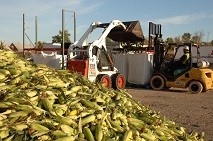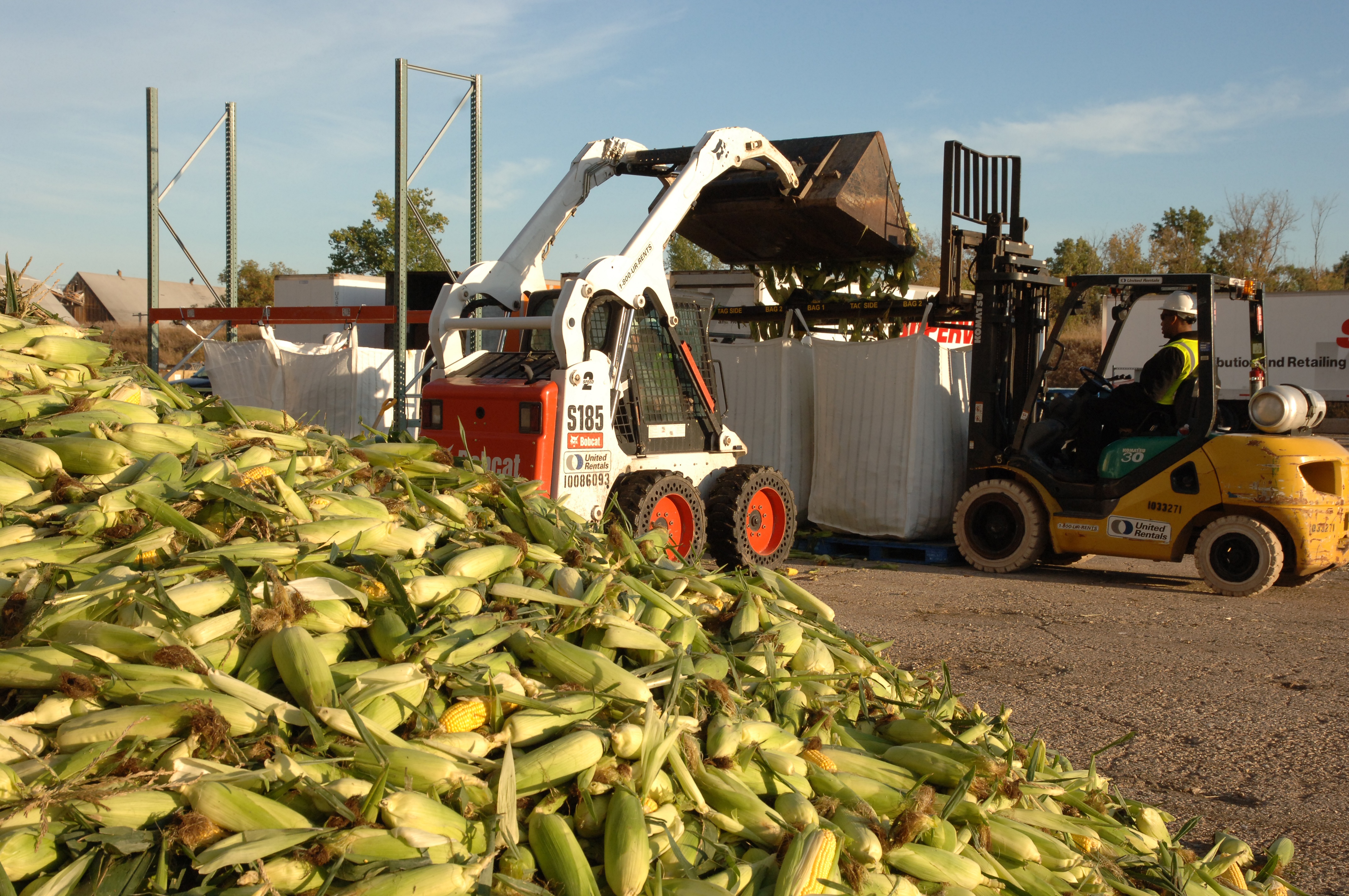Hunger Free Minnesota

There are few people who know what 600,000 pounds of sweet corn look like. Bob Branham, of the Produce Capture Institute, is one of them.
Branham’s organization runs produce rescues. They rescue food that would otherwise rot in fields and donate it to local food pantries.
The rescue work is hard and laborious — especially Branham said for people like him who normally work in offices — but it’s worth it.
“I know this harvest is going to end up in a few days in some mom’s kitchen that can’t normally afford sweet corn,” he said.
The first sweet corn rescue took place in Minnesota as part of the Hunger Free Minnesota campaign, an innovative initiative that brought together individuals, corporations and non-profits with the goal of reducing the state’s meal gap by 60% in three years, starting in 2012.
A study commissioned by the General Mills Foundation found there was a 100 million meal gap in Minnesota. Hunger Free Minnesota identified 22 different strategies that would combat hunger. They included encouraging schools to offer breakfast, helping Minnesotans sign up for SNAP benefits, and providing food pantries with the infrastructure they needed to take in more food.
“Hunger Free was able to engage and bring together all these groups who had been working on these issues for years,” Mary Jane Melendez, the Executive Director of the General Mills Foundation, said, “People wanted to be part of a campaign that was bigger than their own agencies.”
The collective impact model worked, far better than anyone anticipated. Hunger Free Minnesota closed the yield gap by an impressive 70 million meals. “It’s beyond all our wildest dreams,” Mary Jane said.
The General Mills Foundation didn’t just donate money to the initiative, employees volunteered their time and expertise to help fight hunger.
The marketing employees, for instance, designed a campaign with the goal of signing up 70,000 eligible Minnesotans for SNAP in three years. They achieved that goal in three months.
“My jaw hit the desk,” Mary Jane said, when she received the report.
Hunger Free Minnesota is now winding down after a successful three years, but the infrastructure is now in place for those additional 70 million meals to be served every year.
“The strategy was to put streams in place so those meals could come in every year,” Mary Jane said, “Those are meals that are provided every single day to children who otherwise wouldn’t have breakfast.”
Bob continues to grow the produce rescue each year, helping to get fresh fruit and veggies into homes across the country.
“It’s really very rewarding. The mission — ending hunger — is challenging and thrilling to work on,” he said.
For more healthy communities articles, take a look at these other posts from Together Counts!

